ARTICLE XII: THE END OF ADVERSITIES, THE BEGINNING OF A LEGACY
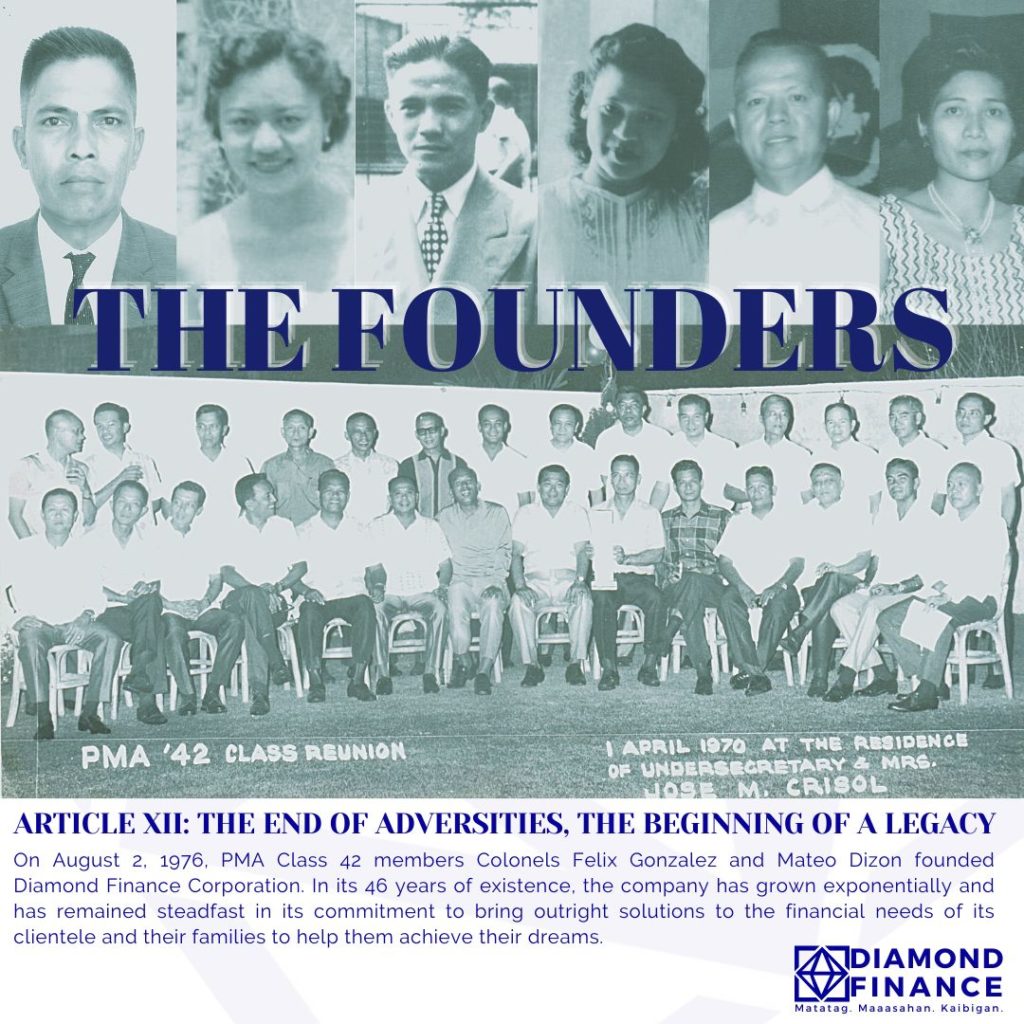
On March 24, 1948, three years after the war came upon the PMA Class of 1942, they had their solemn graduation rites at Camp Henry T. Allen in Baguio City. One by one, the surviving members of Class 42 ascended the stage to receive their diploma that they were supposed to receive six years ago. […]
ARTICLE XI: THE FALLEN
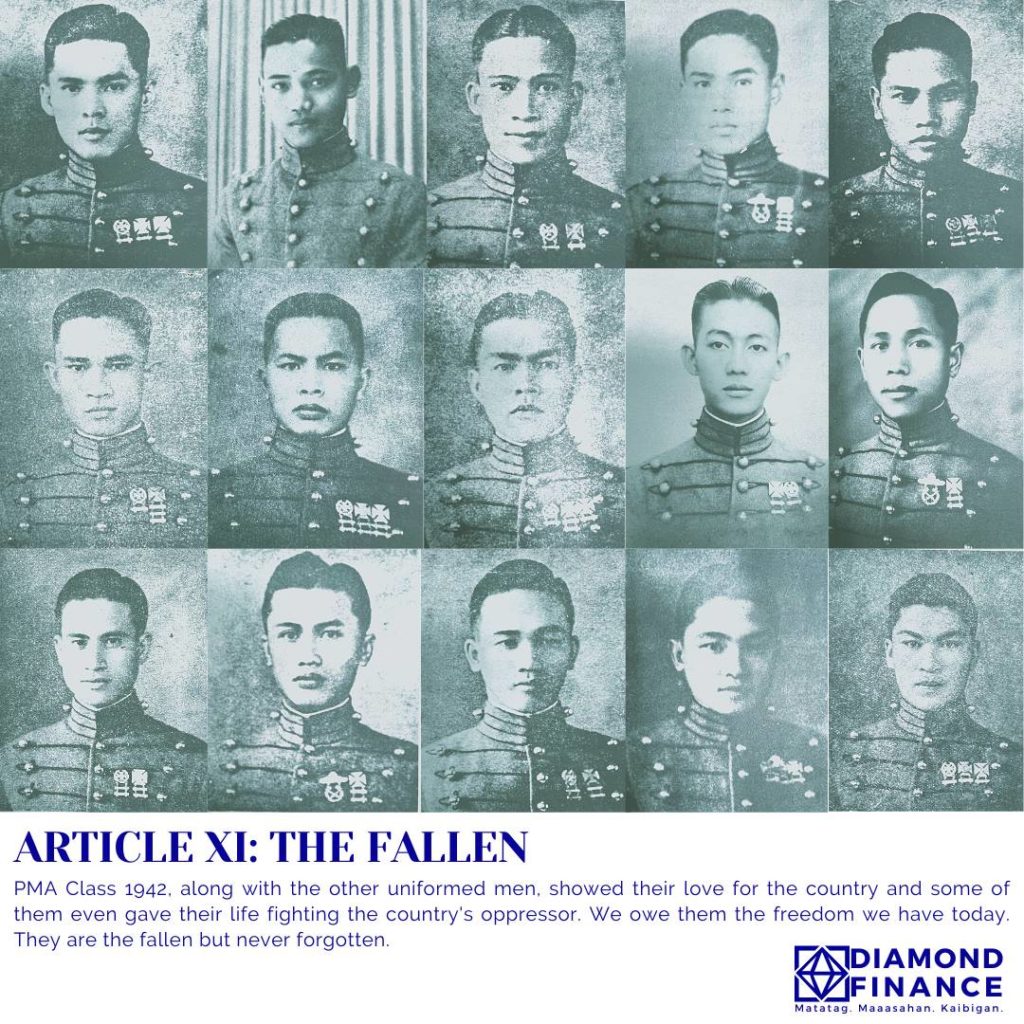
Young and brave, two words that will describe the PMA Class of 1942. They were scheduled to graduate in the summer of 1942 when the war came upon them. Although they were unprepared for their early taste of war, they showed courage and heroism fighting against the enemy. They gave it all their strength, blood, […]
ARTICLE X: THE DEATH MARCH
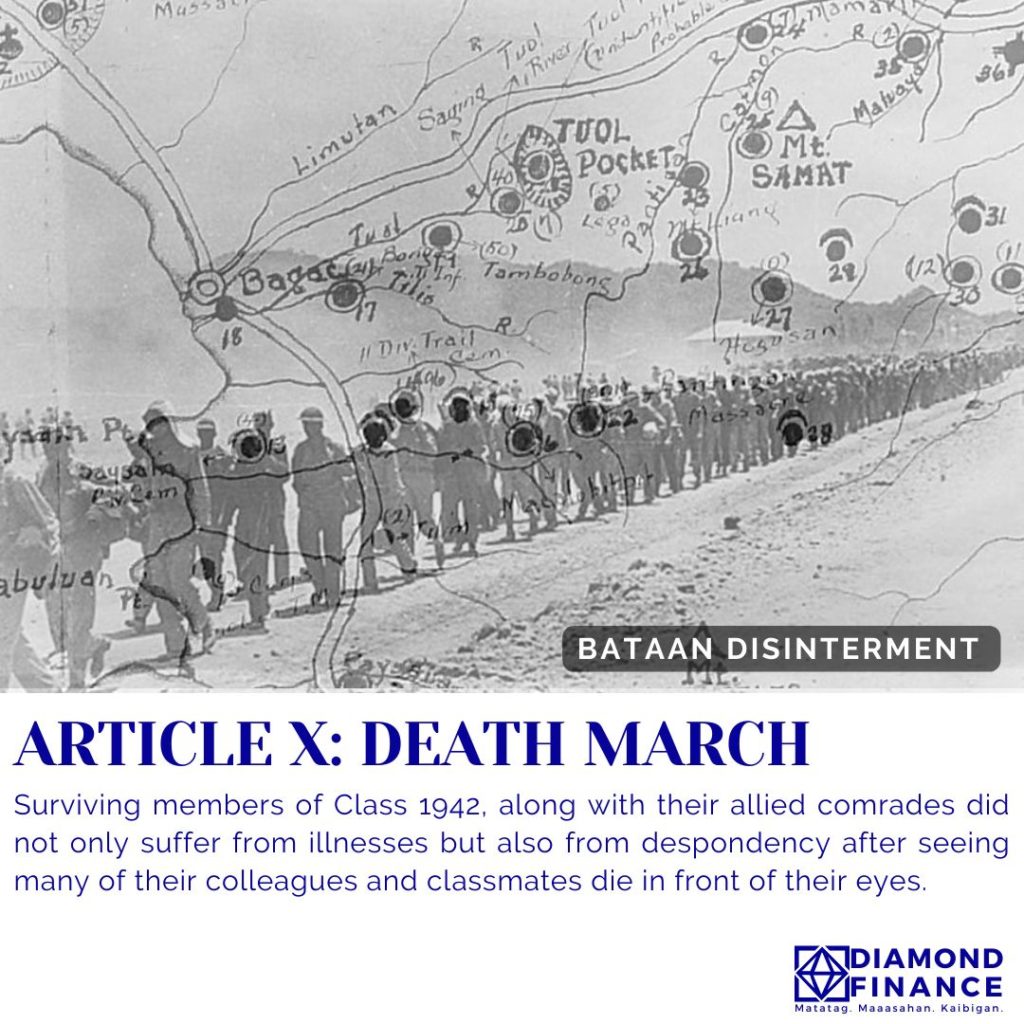
Upon the surrender of the defenders of Bataan and Corregidor, the Japanese military rounded up all Filipino-American soldiers, gathering them into groups of 100. The Japanese military leaders underestimated the number of the captives and were therefore unprepared, for thousands of fighting men were taken prisoners. The enemy’s cruelty showed immediately as they executed nearly […]
ARTICLE IX: RAISING THE WHITE FLAG
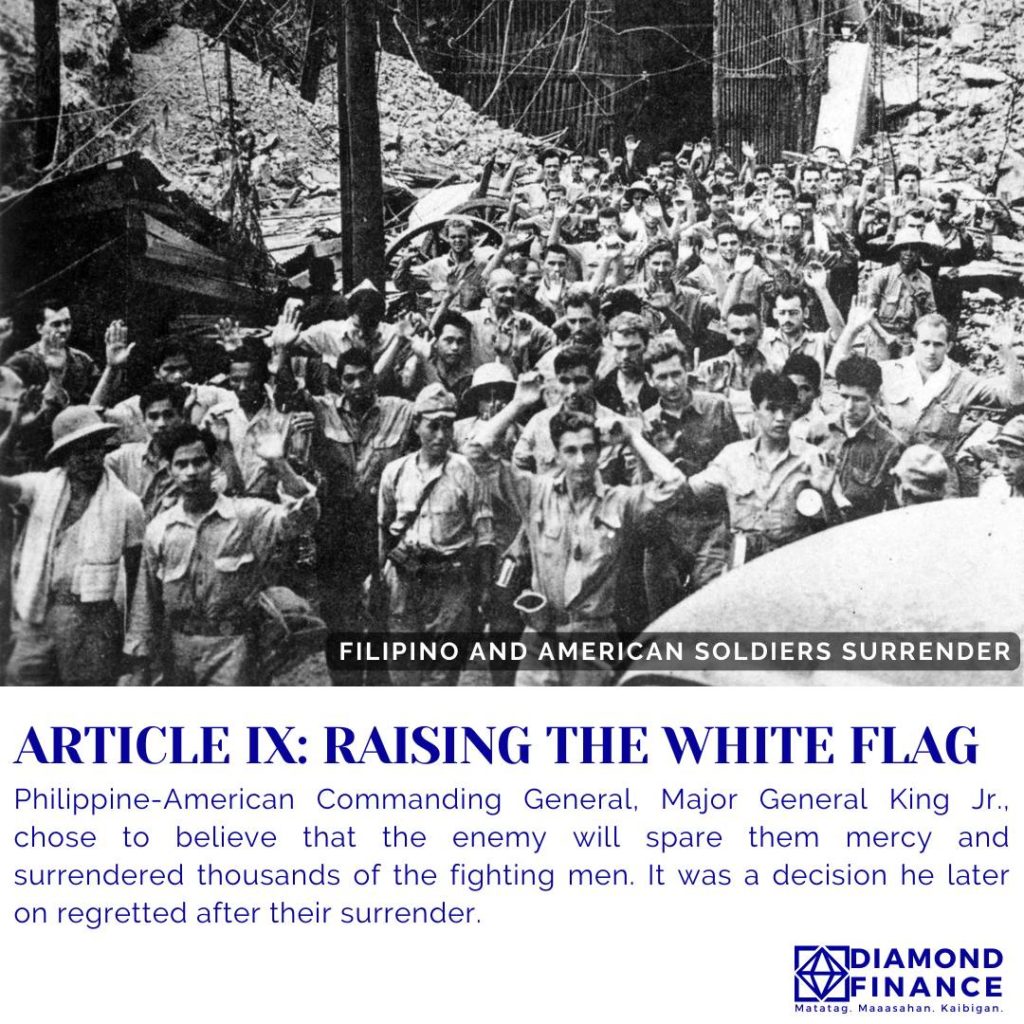
The troops did not notice that months had passed and still the battle continued. Despite being overwhelmed by the invader’s forces, being outnumbered and outgunned, they were still able to annihilate one Japanese Army. These Filipino soldiers, with the members of PMA Classes 1942 and 1943 in the frontline, alongside with the American troops, were […]
ARTICLE VIII – HARDSHIPS INSIDE THE BATTLEFIELD
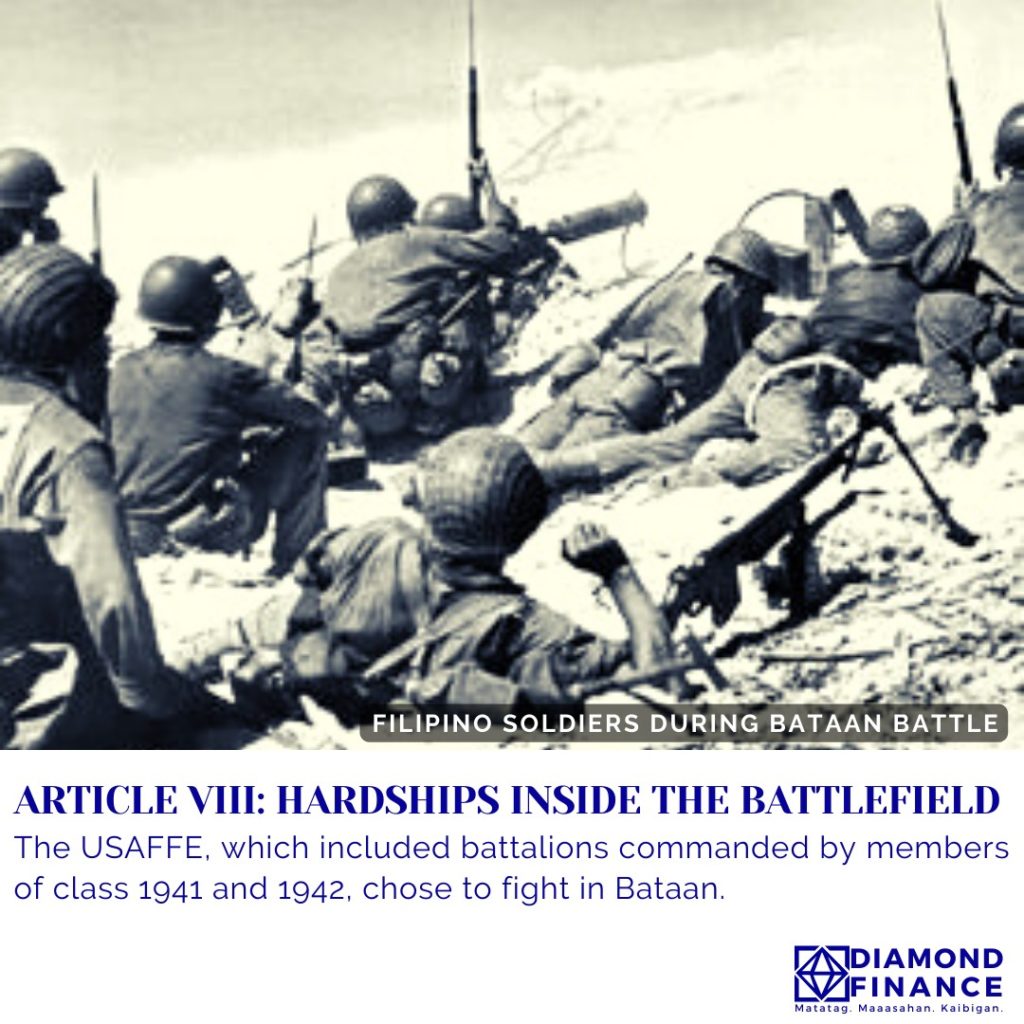
In January of 1942, just a few weeks after invaders took over Manila and the Japanese Military Administration ran its civilian affairs, Filipino troops under the USAFFE gathered together. These men – wherein half were soldiers and half were volunteer civilians – were ordered to deploy in various parts of the country where Japanese troops […]
ARTICLE VII: THE PAWN
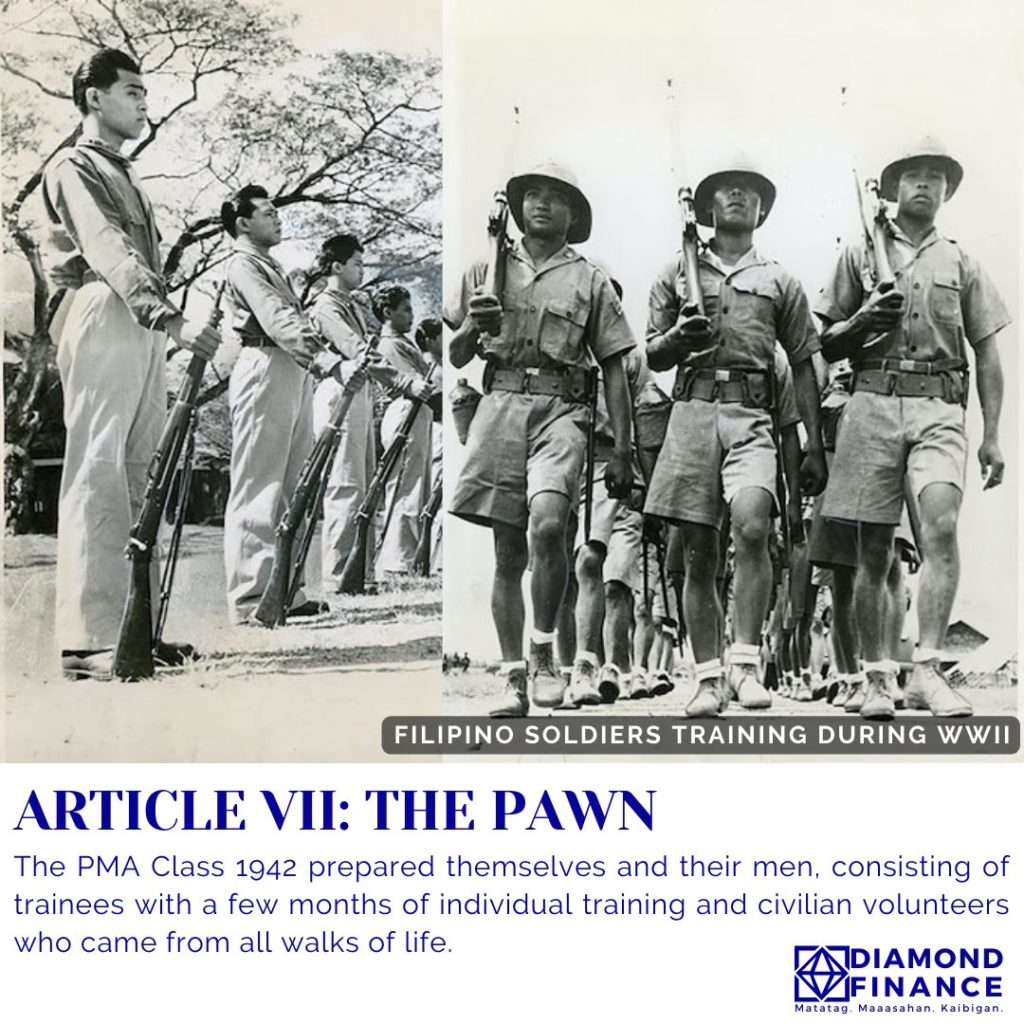
December 26, 1941—a few days after their graduation—the Commander-in-Chief of the United States Army Forces – Far East (USAFFE), General Douglas MacArthur, declared Manila as an open city to spare the city from further destruction. This came about as the Japanese invaders initiated bombing attacks in various parts of the country that soon developed into […]
ARTICLE VI: THE BITTER-SWEET GRADUATION
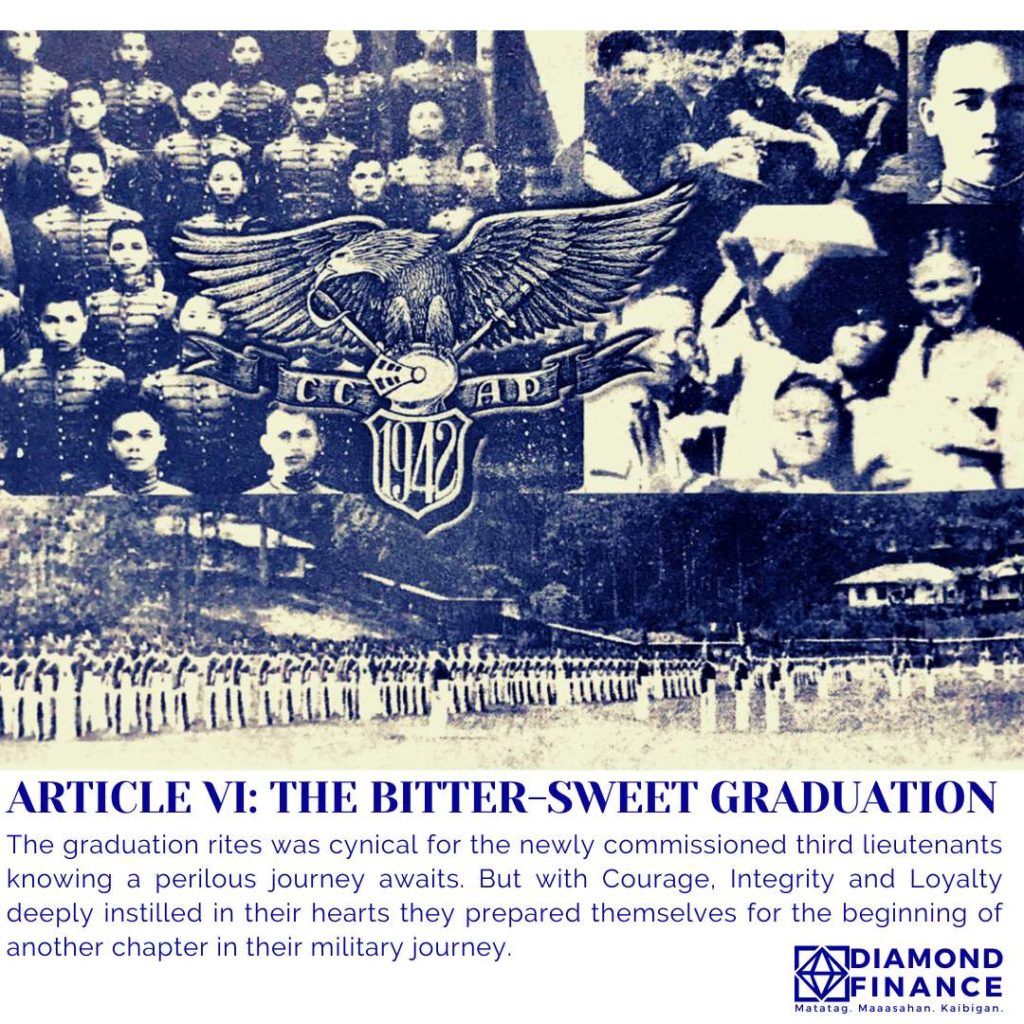
A day after the Camp Balara encounter, December 14th, 1941, PMA Class 1942, together with the members of classes ‘43, ‘44 and ‘45, were ordered to proceed to University of Sto. Tomas for the “Graduation Exercises” of the former. Two days later, the PMA Cadet Corps assembled at the lecture hall of the University’s main […]
ARTICLE V: THE BAPTISM OF FIRE
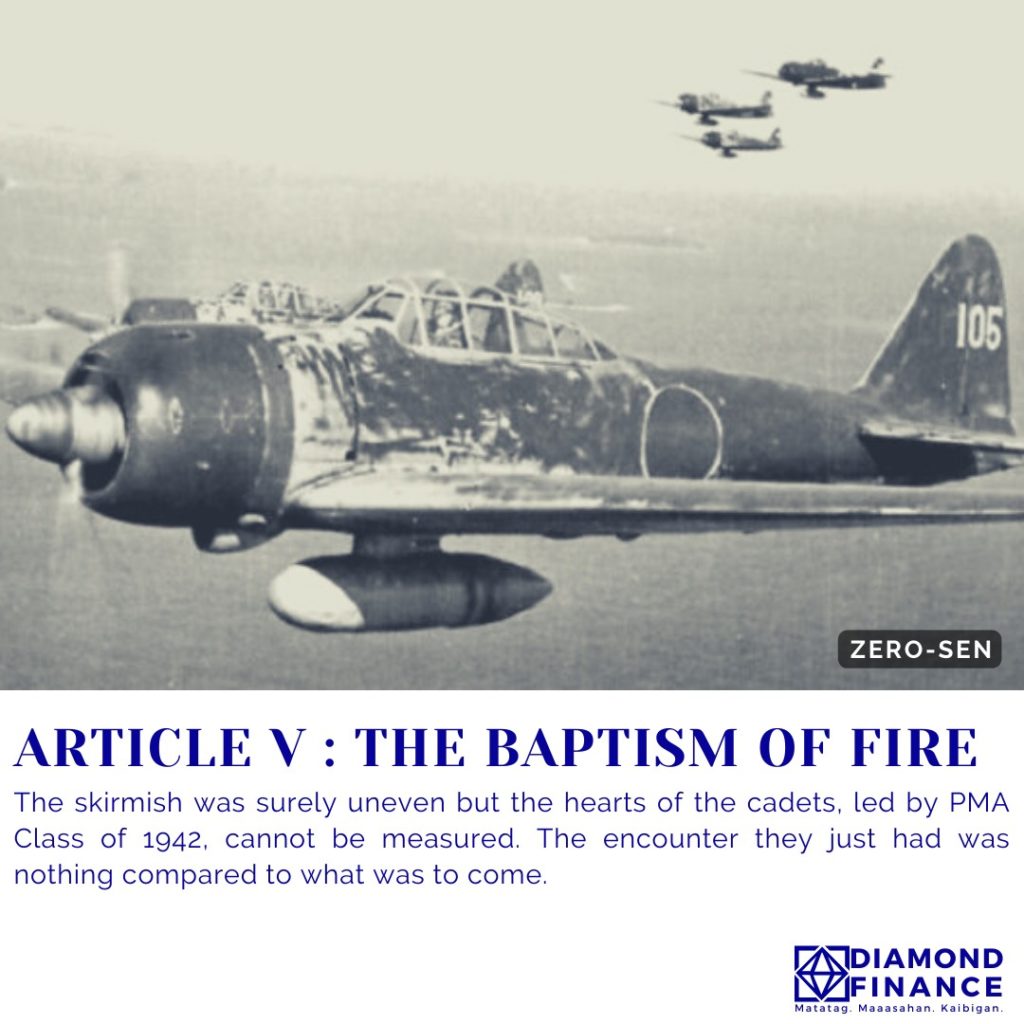
In the afternoon of December 13, 1941, the same day President Quezon visited Camp Balara, a quick turn of events was about to happen. The boost they got earlier that day due to the visit was put to the test as their forward observers raised the alarm. The enemy was spotted. Across the horizon were […]
ARTICLE IV: THE LAST GLIMPSE
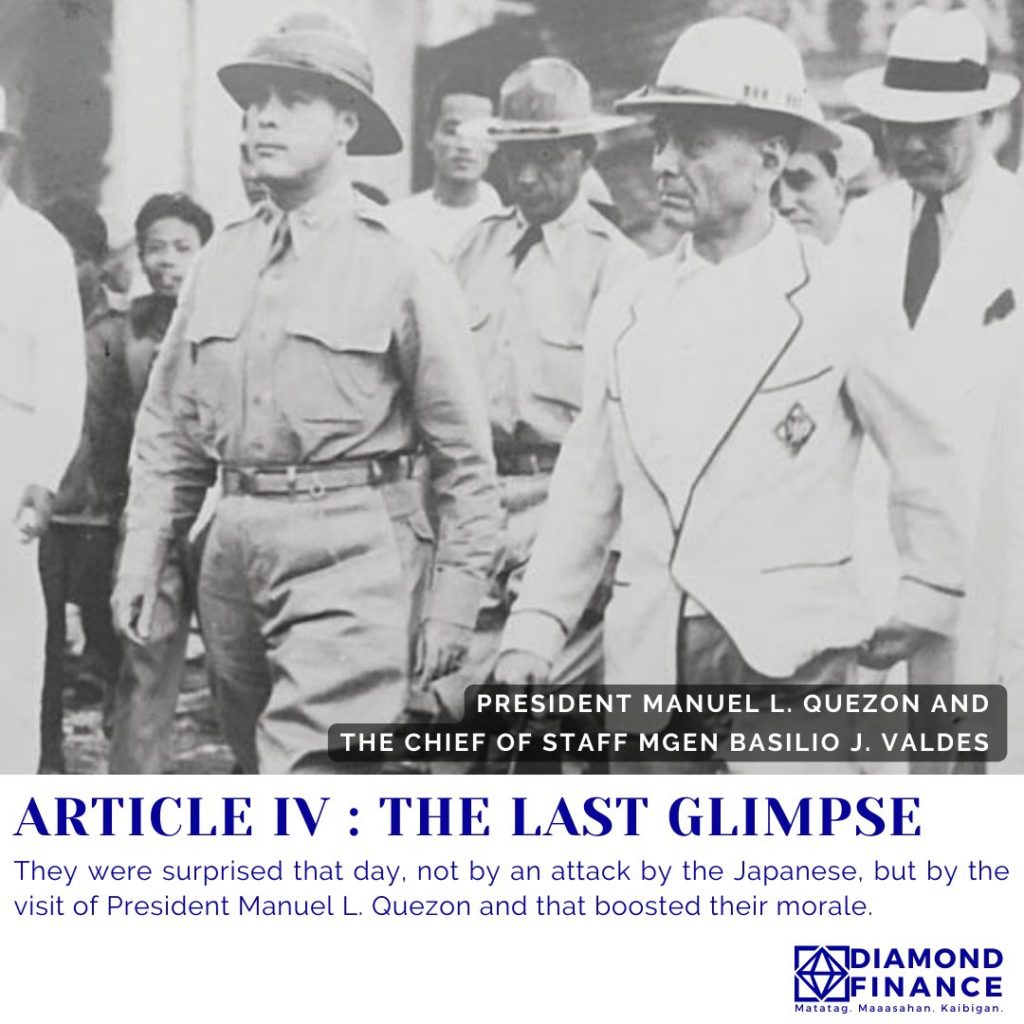
After their hurried evacuation from Teacher’s Camp, the PMA Class of 1942, along with other cadets, officers and all enlisted personnel, safely made it down to Manila. In the early dawn of December 13th, 1941, they arrived at Camp Balara, a camp situated in between the Diliman Creek and Marikina Road and two kilometers north […]
ARTICLE III: WAR AT THEIR DOORSTEP
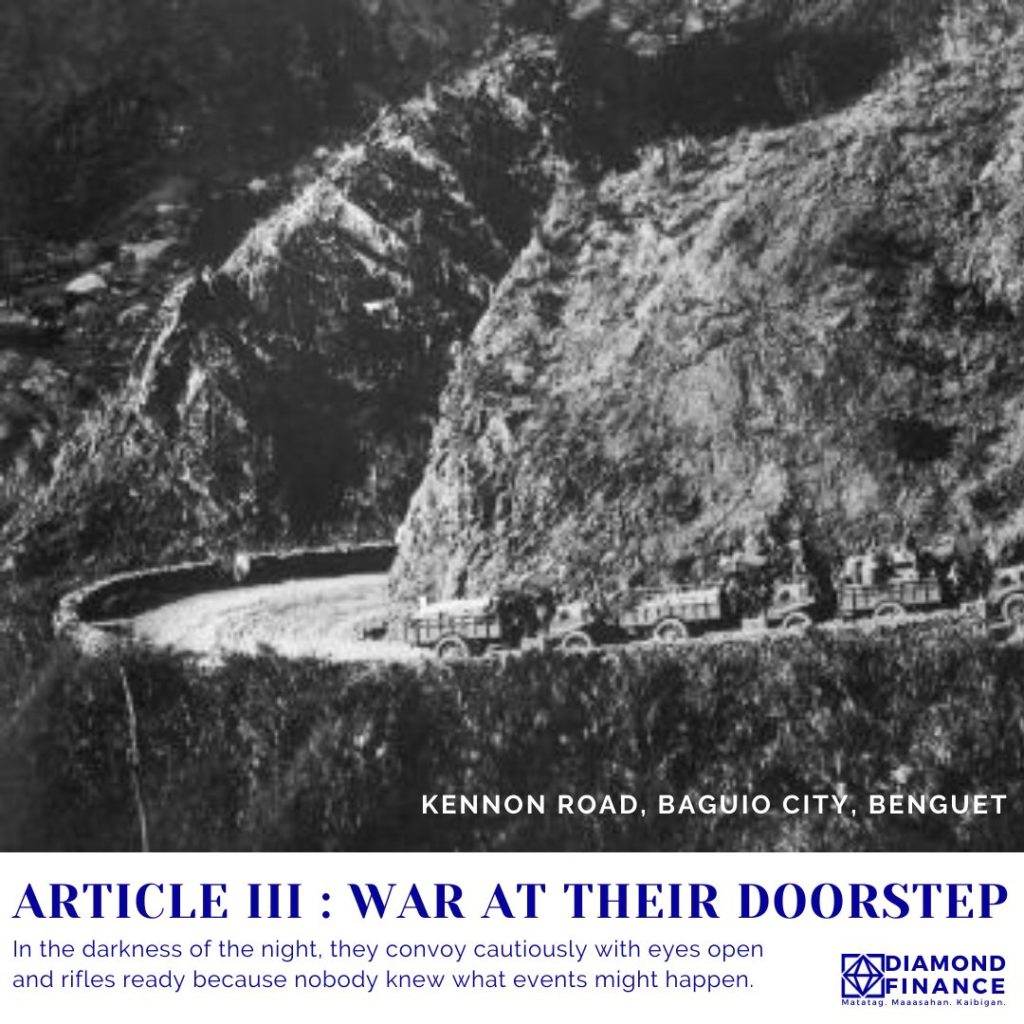
1940 As the conflict in Europe was underway, and with Japan entering into a tripartite agreement with Germany and Italy, raising tensions in the Pacific, the Philippines was preparing for its possible involvement in a war. With the passing of the National Defense Act, it was now the prime duty of the government to defend […]
